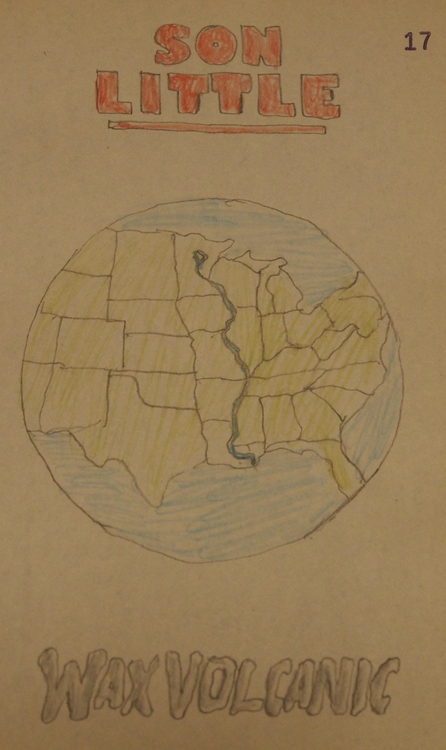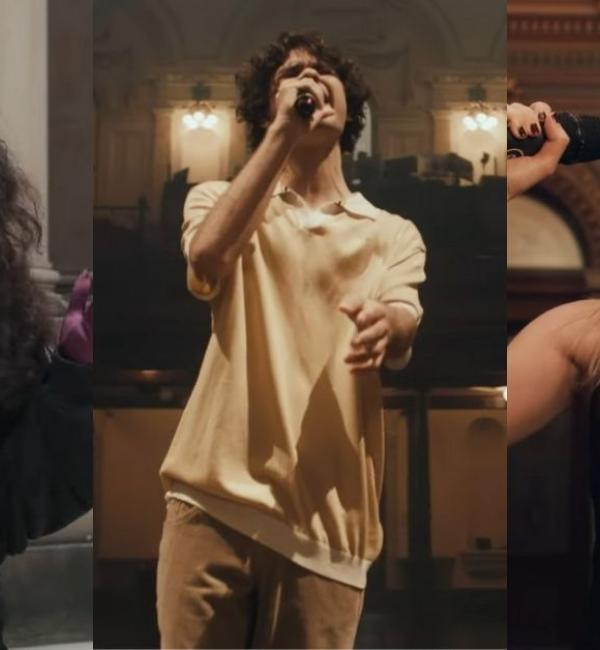
It was a vascular movement, a blood-like swell. The northern spread of the blues along the banks of Mississippi from the river's delta towards Chicago is referred to reverently as the cradle of modern, western music. The place where flesh and geography truly began to unbind, where music could become less determined by place. The blues leapt over state boundaries, swum oceans and frayed (and further frayed) into a multitude of musical styles (insert here almost every genre with 20th Century origins), the fruits of which we continue to reap. But as the decades drifted on, the ventricular tapestry of modern music, with its endless recursive branching, has become intricately tangled. What now, is the place of place?
Son Little’s music seems highly conscious of place. It’s rolling southern-tinged blues and weary urban soul, built out of pure rhythm and fenestrated with melody. Vocally and instrumentally everything is, in its own way, a sort of drum. It’s fascinating, and increasingly so—spare and simultaneously drenched in influences, not fashioned from place so much as constructed in a way that naturally conjures it.
When I speak to Son Little (in his walking-around identity of Aaron Livingston) he’s in Pennsylvania, just over the river from New Jersey, “chilling and getting the lay of the land.”

Musically infused by a childhood that began in California and was spread between Queens (“in a neighbourhood not far from Russell Simmons and LL Cool J”) and the suburbs of New Jersey, Livingston finally settled in Philadelphia.
“Fairly different environments” drawls Livingston, “that bring a number of different influences with them.”
But place is more than just landscape, its more about how people are enmeshed in them. And The key figures of Livingston’s childhood - his parents - remain two of his most instrumental formative influences. Between them they had tastes that showcased the intersection and divergence of style in modern music. Livingston’s mother liked Motown but listed towards “sort of rnb, folk and some rock…things like Simon and Garfunkel, Joan Baez…”. Livingston’s Dad shared his wife’s love of Motown but his taste strayed into Jazz and fusion— Coltrane, Miles Davis and Weather Report. But naturally, like anyone young and musically hungry, Livingston (jnr)’s curiosities were restless and spread from vintage soul all the way to the modern noise of Nirvana and Fishbone.
“I just don’t think that these things are that different from each other…” Livingston maintains quietly.
But pure musical absorption, a process so ruptured by the technological contraction of the world, seems somehow seraphic in today’s interconnected world—as distantly theoretical as the idea of true isolation. But it’s not pure theory. Absorption still goes about it’s silent work, leaking place into music between layers of studied style. Some of the recording Livingston did for Son Little was done at studio in the thickly-wooded area of Woodstock in upstate New York. The studio was surrounded by forest, threaded with chipmunks, owls and bears.
“Mostly I’m listening to music” says Livingston, but I hear those [animal] sounds and they become a part of it, you just naturally reproduce things. Like if you’re around someone everyday who plays guitar and you play the guitar then you passively pick up the characteristics of that type of playing which is how you end up with that original sound…“
The music of Son Little is like an unpicked seam that can be followed from modern rock and hip-hop through to the influences off his parents’ generation and further back, towards the opening decades of the 20th Century. Some of the hymnal-like vocal arrangements and sparse iteracy of the instrumentation are reminiscent of the American Library of Congress field recordings of the south in the 1940s. This is part of Son Little’s fascinating nature, it’s a working analysis of process, of how modern music is both absorbed and studied. Livingston seems keenly aware of it.
"I still think that proximity is the key element either way…but in this environment where you’re not restricted to the things in your immediate environment for input…that’s the interesting thing, we end up mixing these things together whether we’re conscious of it or not…” ‘Cross My Heart’, a single already released from his forthcoming EP, features synthesised percussion, slurring blues guitar line and haunting gang vocals—a perfect illustration of Son Little’s mixing of the absorbed and studied.
“I would definitely consider myself a student of everything, all of the musical history that is behind us. I feel funny in saying 'behind us’ because these things don’t really die…especially if you don’t police your influences, which I don’t. These things are definitely preserved in what we do.” Livingston is well acquainted with musical preservation, having collaborated with artists like the Roots and RJD2, both of which make music rich with samples, old and new music locked together. Icebird (Livingston’s collaboration with RJD2) on their 2011 album abandoned lullaby, music as a study or collection was almost literal. The album crackles with sampled sounds, slivers and loops of old music collected and reimagined. Son Little reimagines sounds not simply by recontextualising them, but braiding them lovingly with new styles and lush production. This is perhaps the most gratifying aspect of Son Little’s music, that an awareness and interaction with musical history doesn’t become pure regurgitation. Son Little’s forthcoming EP,Things I Forgot, features a track simply called 'Joy'—a perfect example of the careful way that the old and new mingle in his music. The track showcases an Omnichord, ordinarily kitsch and dated, triple-layered and strangely haunting.
[Author’s Note: An Omnichord just quickly is basically an electric autoharp. Put out in 1981 by the Suzuki Corporation, it has buttons (majors/minors and 7th) and a magnetic stripe up one side that arpeggiates whatever chord is being held. Sounds sort of like an organ having awkward sex with a dinner bell.]
But the anachronistic use of an Omnichord isn’t the interesting part. It’s more about how the Omnichord is used. He’s not just using an antiquated instrument, but using it in such a way that it’s age floods the rest of the song.
“The crucial ingredient was that I had the batteries run down to a point where the integrity of the instrument kind of falls apart…”

Whether from study or being steeped in place, the music of Son Little is a unique amalgam of styles that makes us question how much the concept of genre actually matters.
“ If you disregard some of the more superficial elements” Livingston reasons, “you can find very easily the places where these types of things intersect. The stories that we’re telling are often the same…it’s the window-dressing that’s different for the most part and that’s where you can have a lot of fun, appreciating the different ways that people use their creativity to bring the story to life…”

Son Little’s EP ’Things I Forgot’ is out on November 14, but thanks to Anti- Records we’ve got a little cheeky stream ahead of its release below.





